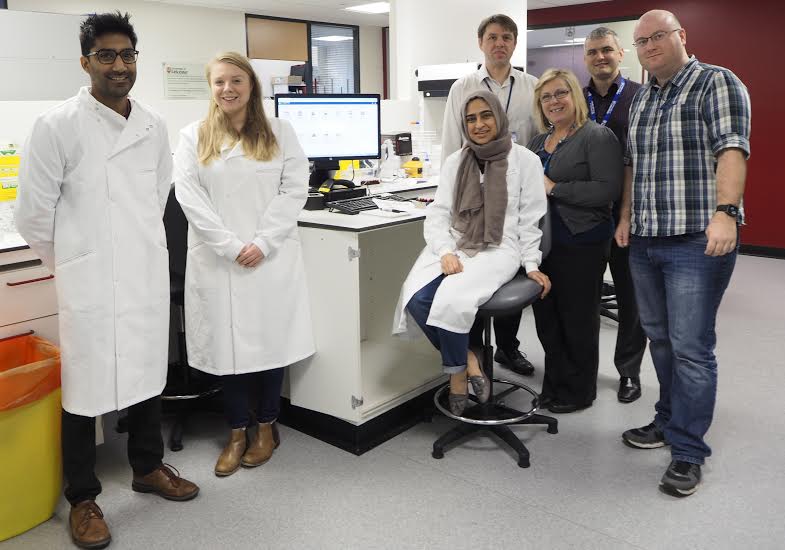The Leicester NIHR Cardiovascular Biomedical Research Unit was established in 2010, and the first priority of the newly formed IT team was to develop a strategy that would provided a suite of tools required to manage the studies we’d be conducting. Of all the LIMS we assessed, the only tool which had the flexibility we needed, at a price we could afford was caTissue. As the labs LIMS requirements grew, we were able to build our own data entry client using the caTissue APIs.

In the production of this client, time was of the essence and so a few shortcut had to be made. For example, the client was hard coded for a single protocol. While imperfect, this v.1 product served its purpose and we were convinced that this would just be the start of the development of the tool.
When we found ourselves in 2015 using the same v.1 client, that wasn’t meeting our needs, we repeated the search for a new tool, and OpenSpecimen 2.x was the obvious choice. While we’d probably have been able to do a basic upgrade in house, we needed to replicate and improve on the functionality of data entry client.
Through informal conversations with the team at Krishagni Solutions it became clear that their suggestion of building the high throughput data entry functionality that we needed as an OpenSpecimen Plugin was a far better solution than our separate client model. The plugin approach meant that we maintain compatibility with the biobank software OpenSpecimen builds. It also allows us to use the high throughput data entry model with new protocols that we’re taking on, and being open source other OpenSpecimen adopter units are able to benefit from the plugin. (Here is the plugin). Needless to say, the other advantage of using a team of OpenSpecimen experts was that we didn’t need to make any compromises as we had done in building our own solution.
We’ve worked informally with Sri and the team at Krishagni for a number of years, and so it came as no surprise that that working on a funded project was just as simple and rewarding. The team were always available over Hangouts or email and the weekly conference calls kept us up-to-date with their progress. This was also a great opportunity to refine on an ongoing basis exactly what we wanted.
Using this high throughput plug in we are able to do a lot of data entry, with minimal effort, making specimen collection and management a much more streamlines process. For example, in one protocol we collect six primary whole blood samples, full annotated with collection, receipt details, provide meaningful derivative names, assign 19 final aliquot labels directly from a 2D barcode scanner output and provide freeze times for them. All this is accomplished with only 12-15 mouse clicks or barcode scans plus minimal typing, making specimen collection and management easy. This new workflow, combined with the ability to processes samples from multiple volunteers at a time mean we have reduced our data input time to about 10-15% of that compared to the normal method, without a drop in data quality.
Being back on the latest version of OpenSpecimen is fantastic for us. There have been so many improvements over the last few years we are already taking full advantage of (we are loving the search), and we can see new features coming through we are looking forward to. Being on the latest version also means that we’ll also be a more active part of the vibrant OpenSpecimen community.
If you’d like to know more about how we are working with this new high throughput data entry model, I’d be more than happy to discuss with you. Just email me at [email protected].